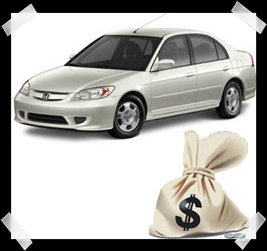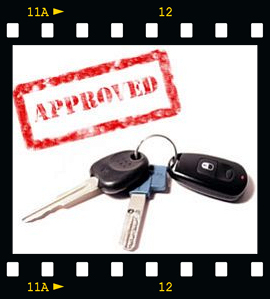Car Financing
By Shenron on Jun 03, 2008 with Comments 0
For most individuals, the purchase of a car is the second biggest purchase-only to a home. If you are in the market to purchase a car, chances are that you will require some type of car financing. Car financing can differ in a variety of ways. However, here are the basics that many people looking to purchase a car will usually come up against.
Car Financing are Secured Loans
First off, it is important to note that the overwhelming majority of car financing loans are secured loans. This means that if you default (are unable to pay) on the loan, the car is the collateral and will be repossessed. Since most vehicles depreciate as soon as they are driven off the lot, most banks require a down payment to offset any risks associated with lending money.
Car Financing Through the Dealership
New car dealerships want to sell as many new cars as possible. This means that they will work aggressively to find financing for the vehicles they sell. Since most buyers require some kind of financing to purchase a vehicle, a new car dealership usually has it’s own lending banks such as General Motors (GMAC) or work closely with a variety of banks to find financing at attractive rates for its customers. It should be noted that since most car buyers require financing for buying a new vehicle, many customers don’t negotiate the final price of a vehicle, but rather terms of financing.
Generally speaking, car financing through the dealership when buying a new car will take into account three important aspects of financing. They include: down payment or trade in, length of financing and monthly payment.
Down Payment or Trade in
It is important to note that most dealerships require some sort of down payment when buying a vehicle to reduce the risk. As mentioned above, once you drive off the lot, your vehicle depreciates in value, if you aren’t able to make payments and the bank repossessed the vehicle, the bank would probably lose money. To offset this balance, a down payment is usually necessary. A down payment usually comes in the form of either cash paid upfront or a trade in. If you are buying a vehicle, it is realistic that the bank would ask you to put down money. This amount of money depends on a number of factors including the buyer’s credit history, age, yearly income, savings, if the buyer was a past customer, etc.
However, while cash down is always accepted, many dealerships find that an easier way for many buyers to place some kind of down payment is to trade in their old vehicle. Since many buyers already have a car that they will no longer require, their old car’s value can be used as a down payment. The value of the vehicle usually depends on the book value and condition, along with a host of other factors. Unfortunately there is no way to determine the exact amount until you have spoken with the dealership.
Length of Financing
Car purchases can be quite expensive and many buyers usually don’t have thousands upon thousands of dollars lying around to buy a vehicle outright. Instead, a payment plan is usually attractive. For the vast majority of car financing purchases, a car loan will be taken out. Interest is charged by the bank which can be as low as 0% all the way up to 30%, however an APR (annual percentage rate) of about 12% or less is usually the norm. The upside of long term financing is that the longer the term of the loan (usually from 12 to 60 months), the less your monthly payment will be. The downside is that the longer term of your loan, the more interest you will pay.
Amount of Monthly Payment
The amount of your monthly payment depends on a lot of variables including the vehicle’s total cost, the amount of the down payment or trade in, the amount of interest charged and the length of the loan.
Car Financing of Used Vehicles
Car financing of used vehicles is very similar to new vehicles, except for one important factor. While new vehicles can usually be financed through car dealership banks (GMAC), used cars are almost universally financed by private banks. There are two major downsides. The first is that finding financing for a used car is less convenient since you may have to contact banks on your own or the used car dealership will have to contact several banks instead of automatically going through the manufacturers lending service. The second downside is that for the most part, used car financing is more expensive in terms of interest rates. Generally speaking, you will have to pay a higher interest rate and pay off your vehicle in a shorter period of time than with new car financing.
Filed Under: General

